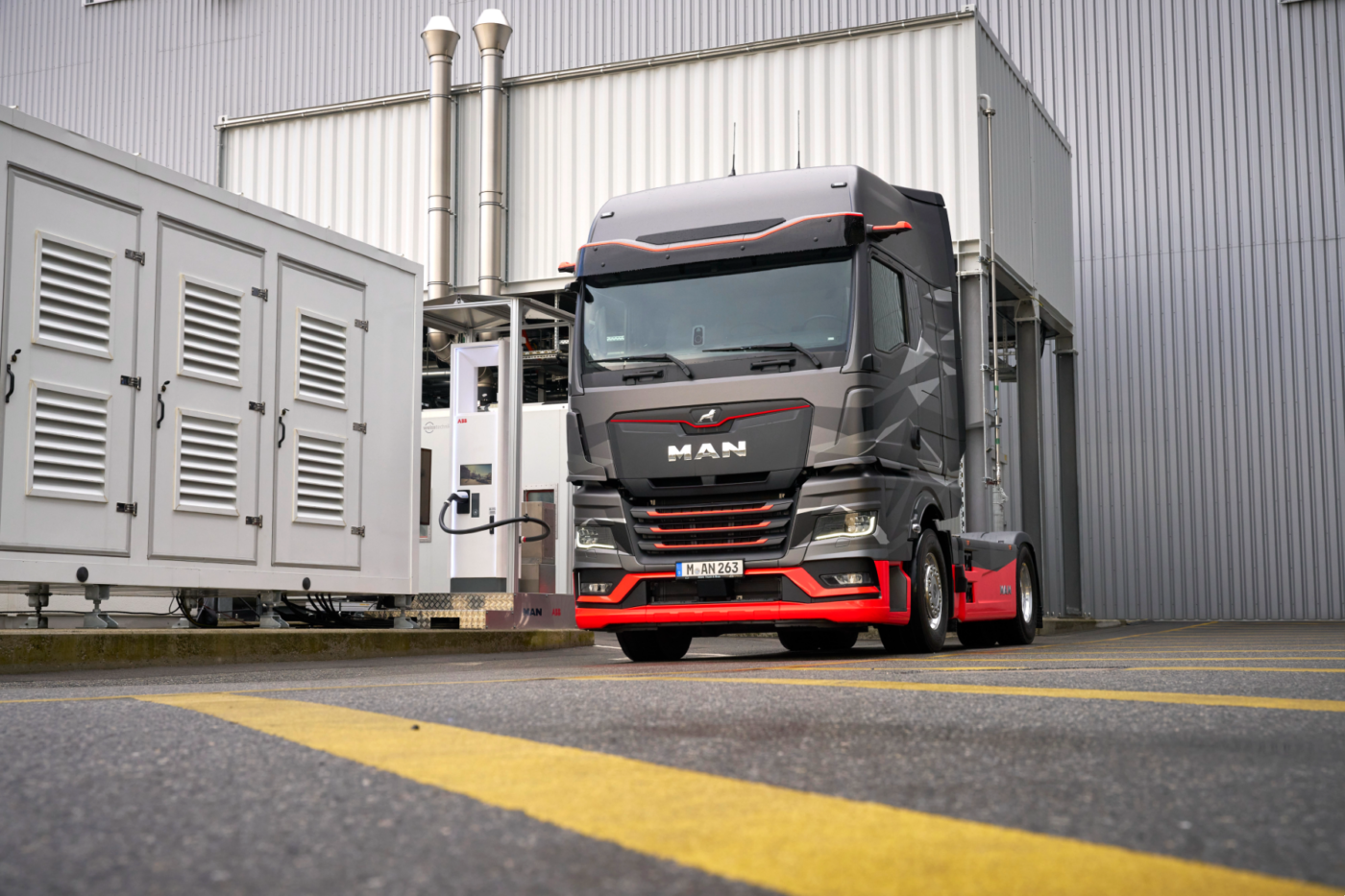MAN eTruck charges 700 kW from ABB’s MCS prototype device
The charging process with ABB’s megawatt charging system in front of an audience took place at MAN’s development centre in Munich. The commercial vehicle manufacturer states that it takes “around half an hour” to charge the battery from 10 to 80 per cent. In future, an electric truck will be able to extend its range by around 300 to 400 kilometres during the statutory driving time break (which stands at 45 minutes).
MAN Truck & Bus and ABB E-mobility signed an exclusive cooperation agreement for technical collaboration at the beginning of the year. The first area of strategic cooperation is the aforementioned megawatt charging system (MCS). According to MAN, the demonstration unit was the first prototype of ABB’s megawatt charging system in Germany. The Swiss charging specialists are also working on MCS charging with Scania.
The aim of the cooperation is to avoid problems for the first users of MCS-capable e-trucks. With this in mind, potential errors are to be recognised and rectified during the software and interoperability tests with the vehicle and charging station so that a reliable infrastructure is available at an early stage. Floris van de Klashorst, Senior Vice President of Products & Hardware Platforms at ABB E-mobility, announced in January that there should be a product “that meets the requirements of logistics” by 2025.
The Megawatt Charging System is designed for a charging voltage of up to 1,250 volts and a current of 3,000 amps, which theoretically corresponds to a charging capacity of up to 3.75 megawatts. By comparison, today’s charging stations with the CCS standard (Combined Charging System) can be used by cars and commercial vehicles and offer a maximum charging capacity of 400 kW at 500 amps. Unlike with electric cars, the position of the charging port on the vehicles is standardised for the MCS. The charging port will be on the left-hand side of the vehicle, in an area between two and 4.80 metres behind the bumper. It should be located there at approximately hip height. This standardised position is intended to simplify the installation of the charging parks. CharIN has already shown the first charging system layouts.
ABB E-mobility and MAN have now initially demonstrated a good 700 kW charging capacity with prototype charging technology. “With the finalisation of the MCS standard, charging capacities of over one megawatt will already be possible,” says MAN headquarters. The international standardisation process for the Megawatt Charging System is expected to be completed this year. ABB E-mobility and MAN are involved in the international industry association CharIN. MAN emphasises that the new technology complements existing solutions. After all: “Depot charging with lower charging capacities will continue to play a central role in the future.”
Michael Halbherr, CEO of ABB E-mobility, commented on the megawatt charging demonstration as follows: “With MCS, sustainable long-distance transport with trucks and buses will be possible in the near future. We have proven that today. Even if we are still showing a prototype here: With the new MCS standard, we have not only doubled the amperage but also the charging capacity within just a few years. To achieve the energy transition in transport, we need solutions that are sustainable, reliable and economical. To achieve this, we need to think integratively and work together. Today’s demonstration is also the result of close collaboration between MAN and ABB E-mobility and the entire industry.”
Meanwhile, Alexander Vlaskamp, CEO of MAN Truck & Bus, reiterated his call for more speed in the expansion of the charging infrastructure: “The goal is 30,000 MCS charging points in Europe by 2030, around 4,000 of them in Germany. We put one of the first charging points into operation today. We don’t have much time left to set it up. The electric trucks are available, megawatt charging is working. We now need clear signals from politicians, not least to build trust among our customers in favour of electrification. We now need to build and scale up the infrastructure quickly.”





0 Comments